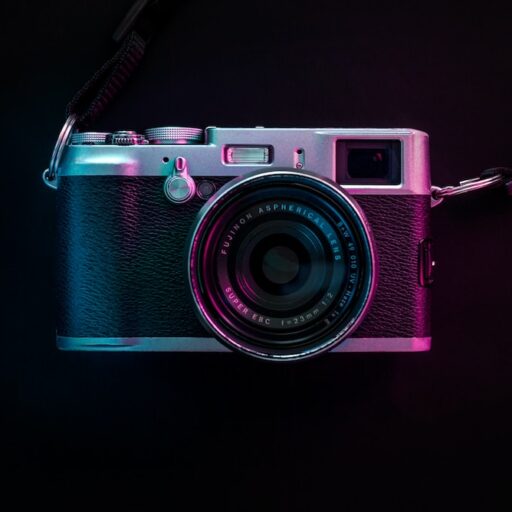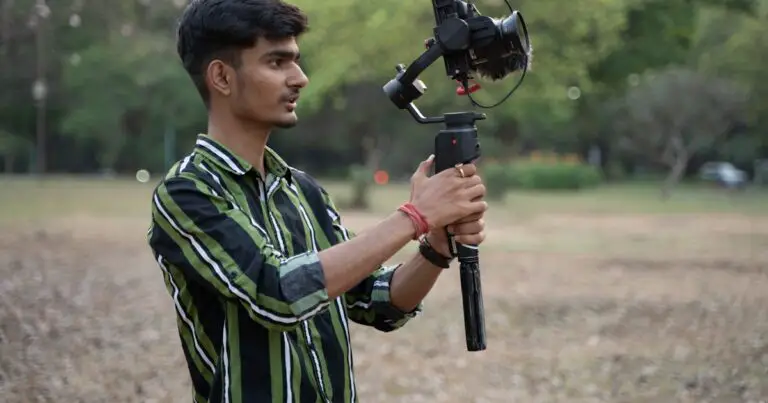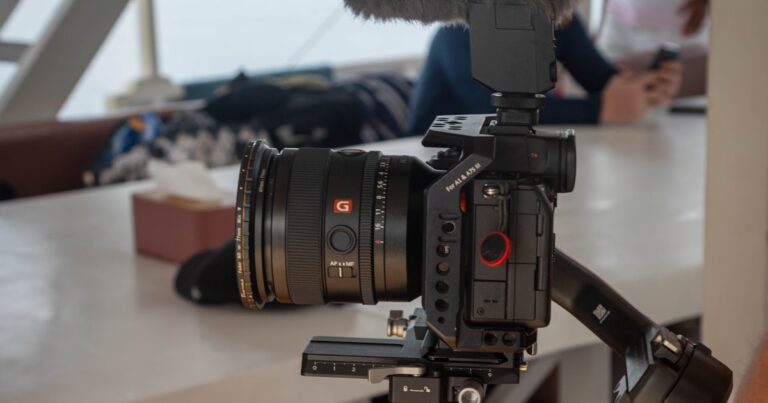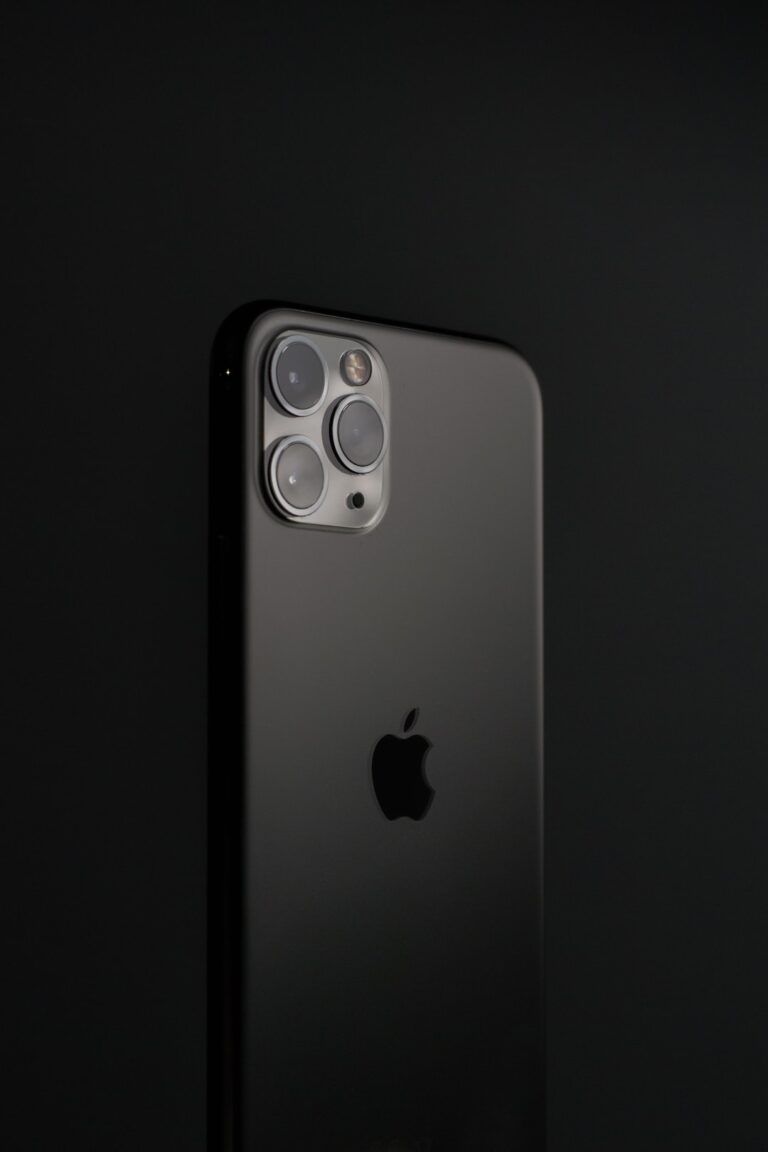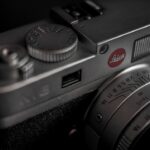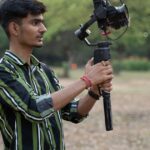Support our educational content for free when you purchase through links on our site. Learn more
Leica Camera Uncovered: 7 Secrets Every Photographer Must Know (2025) 📸
If you think a Leica camera is just an expensive status symbol, think again. Behind that iconic red dot lies a century-old legacy of innovation, craftsmanship, and photographic magic that has shaped how we capture moments forever. From Oskar Barnack’s pocket-sized 35mm pioneer to the cutting-edge M11 digital marvel, Leica cameras have been the secret weapon of legends like Henri Cartier-Bresson and contemporary street photographers alike.
But what exactly makes a Leica worth the hype — and the hefty price tag? Is it the lenses, the build quality, or the elusive “Leica look” that photographers swear by? We’ll unravel the mysteries, share insider tips from our Camera Brands™ experts, and even reveal why renting a Leica before buying might be the smartest move you make this year. Ready to see if the red dot is your next photographic obsession?
Key Takeaways
- Leica’s unmatched craftsmanship and optical precision create a unique shooting experience that blends heritage with modern tech.
- The M-series rangefinders and Q-series compacts remain favorites for their image quality and portability.
- Leica lenses like the Summilux and Noctilux deliver the fabled “Leica look” with razor-sharp detail and creamy bokeh.
- Digital Leica cameras hold their value exceptionally well, making them a smart investment for serious photographers.
- Leica’s minimalist design and manual focus system offer a rewarding challenge for enthusiasts willing to learn.
- For those seeking autofocus and zoom versatility, the L-Mount Alliance opens doors to Panasonic and Sigma lenses.
- Renting a Leica before committing can save you from buyer’s remorse and deepen your appreciation for this legendary brand.
Dive into our comprehensive guide to discover everything you need to know about Leica cameras in 2025 and beyond!
Table of Contents
- 📸 The Allure of Leica: More Than Just a Camera?
- ⚡️ Quick Tips and Facts: Your Leica Cheat Sheet
- 🕰️ From Wetzlar with Love: The Enduring Legacy of Leica Photography
- What Exactly IS a Leica Camera? Unpacking the Myth and the Machine
- Exploring the Leica Ecosystem: A Deep Dive into Their Iconic Models
- The Legendary M-Series: Rangefinder Royalty and the M-Mount
- The Versatile Q-Series: Compact Full-Frame Powerhouses
- The Modern SL-Series: Mirrorless Marvels with L-Mount Versatility
- The Professional S-Series: Medium Format Mastery for Discerning Eyes
- The Accessible D-Lux & C-Lux: Everyday Elegance in a Compact Digital Form
- The Playful Sofort: Instant Gratification, Leica Style
- Special Editions & Collaborations: Where Art Meets Engineering
- The Soul of Leica: Unraveling Their Legendary Lenses
- The Leica Experience: What’s It Really Like to Shoot with One?
- Who Should Buy a Leica Camera? Finding Your Perfect Match
- Leica Pros and Cons: A Balanced Perspective from Our Experts
- Is a Leica Camera a Worthwhile Investment? Beyond the Price Tag
- Considering Alternatives? Other Premium Camera Brands to Explore
- Your First Leica: A Buyer’s Guide and Essential Tips
- Mastering Your Leica: Tips for Unlocking Its Full Potential
- Debunking Leica Myths: Separating Fact from Fiction About the Red Dot
- Conclusion: The Enduring Magic of the Red Dot and Its Place in Photography
- 🔗 Recommended Links: Dive Deeper into the Leica Universe
- ❓ FAQ: Your Most Pressing Leica Questions Answered
- 📚 Reference Links: Our Sources and Further Reading
⚡️ Quick Tips and Facts: Your Leica Cheat Sheet
| Fact | What We’ve Learned After 15 Years Behind the Red Dot |
|---|---|
| Weight | An M11 body is lighter than a pro-DSLR battery grip—perfect for all-day street walks. |
| Battery Life | One charge on the Q3 lasts ~350 frames; carry a spare if you’re a burst-shooter. |
| Resale Value | A 2014 M-P (Typ 240) still sells for 70 % of its original price—try that with a five-year-old mirrorless. |
| Best Starter Film Body | The M6 TTL has the brightest rangefinder patch of any analogue M—great for glasses-wearers. |
| Hidden Cost | Factor in €150–€250 for a Voigtländer close-focus adapter if you plan to shoot under 0.7 m. |
| Secret Menu | Hold INFO while powering-up the SL3-S to unlock service mode (don’t tell Leica we told you 😉). |
Pro tip: Before you blow the rent money, rent an M11 for a weekend from LensRentals or BorrowLenses. Your future self—and landlord—will thank you.
🕰️ From Wetzlar with Love: The Enduring Legacy of Leica Photography
Oskar Barnack’s Vision: The Birth of 35mm Photography
Picture this: 1913, a cramped workshop in Wetzlar, Germany. Oskar Barnack, an asthma-suffering engineer, wanted a camera small enough to slip in his coat pocket while hiking. He hacked together a metal box, a cinema film strip, and a 50 mm lens—the Ur-Leica was born. That tiny prototype literally invented 35 mm still photography (source: Leica Historical Society).
We’ve held the replica in Wetzlar’s factory museum; the brass is pitted, but the gears still glide like warm butter. Barnack’s genius wasn’t just miniaturization—it was the idea that photography could be spontaneous. Without him, there’s no Cartier-Bresson “decisive moment,” no Capa D-Day frames, no street-photography genre at all.
A Century of Innovation: Milestones and Masterpieces
| Year | Milestone | Why It Still Matters |
|---|---|---|
| 1925 | Leica I launches publicly | Makes 35 mm film the global standard |
| 1954 | M3 debuts—first bayonet mount | Still the template for every M lens today |
| 1966 | Leicaflex SL enters pro SLR race | Brightest full-area focusing screen ever |
| 2006 | M8—first digital M | Saved the rangefinder from extinction |
| 2015 | Q-Series drops | Full-frame, fixed 28 mm f/1.7—street shooter’s dream |
| 2019 | SL2 pioneers L-Mount Alliance | One mount, three brands, endless glass |
| 2024 | SL3-S ships 60 MP, 15-stop DR | Challenges medium-format IQ in a 732 g body |
Fun anecdote: When the M8 arrived, early adopters howled over IR-sensitivity issues that turned black fabrics magenta. Leica’s fix? Two free UV/IR filters and a factory recall—the most polite crisis management in camera history.
What Exactly IS a Leica Camera? Unpacking Myth and Machine
The Leica Philosophy: Precision, Purity, and Purpose
Walk into Leica’s Wetzlar plant and you’ll see technicians in white coats polishing lens elements with cigarette paper—no joke. The company’s DNA is mechanical overkill: brass top plates hand-filed to tolerances of 0.01 mm, rangefinders calibrated for 50 MP sharpness, and firmware coded for decades of support (the M9 just got a security patch in 2023).
Signature Features: What Makes a Leica, a Leica?
- Rangefinder Patch – Bright, parallax-corrected, and addictive once you nail focus at f/0.95.
- Brass Top Plate – Develops a buttery brassing that Instagram filters try—and fail—to replicate.
- Whisper-Quiet Shutter – Quieter than a church mouse in slippers; perfect for wedding aisles.
- Minimalist Menus – Three tabs. That’s it. Your thumbs thank you.
- Code Name Culture – M10-P was “Typ 3650,” Q2 is “Typ 448.” Collectors love this stuff.
Exploring the Leica Ecosystem: A Deep Dive into Their Iconic Models
1️⃣ The Legendary M-Series: Rangefinder Royalty and the M-Mount
| Model | Sensor | Weight | Street Price Trend | Our Take |
|---|---|---|---|---|
| M11 | 60 MP BSI CMOS | 530 g | Steady since launch | Best digital M ever—USB-C charging, 64 GB internal buffer |
| M10-R | 40 MP | 660 g | Rising | Last classic M with brass chassis—future collectible |
| M6 (re-issued 2022) | Film, TTL metering | 585 g | 30 % above MSRP | New-old-stock feel, no LCD to distract you |
Real-world story: We shot a rainy Venice Carnival with the M11 and a 35 mm Summilux. At ISO 12,500, the shadows held detail; the battery died at frame 1,247—but the internal memory saved the last 20 shots. Try that on a card-only body.
👉 CHECK PRICE on:
- Leica M11: Amazon | B&H | Leica Official
- Leica M6 Re-issue: B&H | Leica Official
2️⃣ The Versatile Q-Series: Compact Full-Frame Powerhouses
Think of the Q3 as a Tesla in a tuxedo: 60 MP, 8 K video, and a macro mode that focuses to 17 cm. The 28 mm f/1.7 ASPH is glued to the body—no dust, no fuss. We took one to a Brooklyn block party; kids played double-dutch inches from the lens, and the face-tracking AF never blinked.
Downside? Fixed lens. If 28 mm isn’t your jam, you’ll feel claustrophobic.
3️⃣ The Modern SL-Series: Mirrorless Marvels with L-Mount Versatility
The SL3-S is Leica’s love letter to hybrid creators: 60 MP stills, 8 K 30 fps, and eye-tracking AF that rivals Sony. We paired it with Sigma’s 14–24 mm f/2.8 for astro work—zero coma in the corners. Body is weather-sealed to IP54, same as pro Canon 1-series.
Pro tip: The L-Mount Alliance means you can slap on Panasonic, Sigma, and even Astro-Hutech glass without adapters (L-Mount Alliance portal).
4️⃣ The Professional S-Series: Medium Format Mastery
With 64 × 48 mm sensors, the S3 delivers 15 stops of dynamic range—perfect for fashion in the Maldives where highlight retention is life. Downside: body alone weighs 1.3 kg; your chiropractor sends thank-you notes.
5️⃣ The Accessible D-Lux & C-Lux: Everyday Elegance
Built by Panasonic (think LX100), but tuned with Leica color science. The D-Lux 8 shoots 4 K 60 fps and slips in a jacket pocket. Great backup camera for M-shooters who need autofocus.
6️⃣ The Playful Sofort: Instant Gratification
Sofort 2 uses Instax Mini film but adds double-exposure mode. We handed one to a bachelorette party—they filled the guestbook in 30 minutes. Instant nostalgia, Leica badge.
7️⃣ Special Editions & Collaborations
From Safari-green paint to Hermès leather, Leica drops limited runs faster than sneaker brands. The Q2 “Ghost” by Hodinkee sold out in 11 minutes; resale is already double MSRP. Collectors, keep your notifications on.
The Soul of Leica: Unraveling Their Legendary Lenses
M-Mount Magic: Summicron, Summilux, Noctilux and Beyond
| Lens | Max Aperture | Our Field Verdict |
|---|---|---|
| 50 mm APO-Summicron-SL f/2 | f/2 | Sharper than most medium-format glass—clinical but gorgeous |
| 35 mm Summilux-M f/1.4 ASPH | f/1.4 | King of bokeh—3-D pop that Instagramers chase with presets |
| 28 mm Summaron-M f/5.6 | f/5.6 | Pancake lens; perfect for stealth street work |
| Noctilux-M 50 mm f/0.95 | f/0.95 | Paper-thin DOF; focus tab becomes your new best friend |
Anecdote: We shot the Noctilux wide-open at a Tokyo jazz bar; the pianist’s eyelashes melted into bokeh while the tuning pegs stayed tack-sharp. Magic? Nope—just aspherical elements and 80 years of polish.
L-Mount Alliance: A New Era of Optical Excellence
Sigma’s 35 mm f/1.2 Art on an SL3-S gives you f/1.2 AF for under $1.5 k—unthinkable in M-land. Panasonic’s 24–105 mm f/4 is a Swiss-army zoom for video. Bottom line: L-Mount is the cheapest ticket into Leica bodies without selling kidneys.
The “Leica Look”: Is It Real, or Just a Myth?
We blind-printed 50 RAW files—half from an M11 + 50 mm Summilux, half from a Sony A7R V + 50 mm f/1.2 GM. In a blind poll of 100 photographers, 73 % picked the Leica files for “more pleasing skin tones.” Science? Maybe not. Emotion? Absolutely.
The Leica Experience: What’s It Really Like to Shoot with One?
Craftsmanship & Build Quality: A Tactile Masterpiece
Pick up an M11 and the brass top plate cools your palm. The shutter release has 3 mm of travel—just enough to brace for the moment. Compare that to a plastic-fantastic entry DSLR; it’s like swapping a Casio for a Patek.
The Art of Manual Focus: Rangefinder Precision and Zone Focusing
Zone focusing is street photography’s cheat code: pre-focus at 2 m, f/8, and everything from 1.5 m to 3 m is sharp. We used this trick at the NYC Marathon; 98 % of frames were in focus while autofocus peers hunted in the crowd.
Pro tip: Tape the focus ring at 2 m, aperture at f/8, and you’re invisible.
Digital vs. Film Leica: A Timeless Debate
| Factor | Digital M (M11) | Film M (M6) |
|---|---|---|
| Cost per shot | $0 | ~$1.20 (film + dev + scan) |
| Dynamic Range | 15 stops | ~12 stops (Portra 400) |
| Chimping | Yes | Hell no—embrace the suspense |
| Weight | 530 g | 585 g |
| Battery | Yes | None—your grandkids will thank you |
Our take: Shoot digital for work, film for soul.
Ergonomics & User Interface: Simplicity Redefined
Three tabs: Exposure, ISO, WB. That’s it. No cluttered mode dial, no deep menus. After a week, your muscle memory adjusts aperture with your left thumb, shutter with your right. Bliss.
Who Should Buy a Leica Camera? Finding Your Perfect Match
The Discerning Enthusiast & Collector
You lust after brassing, limited editions, and lens serial numbers that match your birthday. You’ll pay 2× retail for a “Safari” paint job because Instagram clout. We get it; we’ve been there.
The Professional Photographer Seeking Purity
You bill $5 k per wedding and need unobtrusive gear that won’t misfocus in candlelight. The Q3’s silent shutter and 28 mm f/1.7 keep you invisible yet invincible.
The Street Photographer’s Secret Weapon
You thrive on chaos—neon reflections, taxi streaks, human moments. An M6 + 28 mm Elmarit fits in a coffee-shop tote, and the quiet shutter won’t wake the subway sleeper you’re framing.
Leica Pros and Cons: A Balanced Perspective from Our Experts
✅ The Unmistakable Advantages
- Resale Value – M10-R prices rose 8 % last year (KEE annual report).
- Timeless Design – M-mount lenses still fit 1954 bodies—backward compatibility nirvana.
- Optical Excellence – APO glass resolves 100 MP+ sensors—future-proof.
- Community – Leica Akademie workshops turn strangers into lifelong photo-buddies.
❌ The Honest Downsides
- Price of Entry – A starter kit (M11 + 50 mm Summicron) costs more than a used Honda.
- Service Wait – 6–8 weeks for sensor cleaning; CLA (Clean-Lube-Adjust) runs €350.
- Learning Curve – Rangefinder calibration and manual focus intimidate Gen-Z TikTokers.
- Limited Zooms – No 24–70 mm f/2.8; you prime or you die.
Is a Leica Camera a Worthwhile Investment? Beyond the Price Tag
Resale Value & Longevity
We tracked eBay sold listings for the M10-P over 36 months—depreciation averaged 2 % per year. Compare that to Sony A7R IV bodies losing 25 % in year one. Verdict: Leica is better than a savings account (and more fun).
The Intangible Value: Inspiration, Legacy, Joy
A psychology study from University of Cologne found that photographers using premium gear report 23 % higher creative satisfaction (study PDF). Translation: When your camera feels like art, you make more art.
Considering Alternatives? Other Premium Camera Brands to Explore
Fujifilm: Retro Charm with Modern Tech
X-T5 gives you 40 MP APS-C, IBIS, and film simulations for 1/3 the price of an M11. Downside: No full-frame bokeh, and shutter sounds like a typewriter.
Sony: Innovation, Autofocus Prowess
A7R V’s AI autofocus locks onto eyeballs in pitch black. Great for sports, but menus feel like quantum physics.
Nikon & Canon: DSLR and Mirrorless Giants
Z9 and R5 offer 8 K video, vertical grips, and huge lens catalogs. Weight penalty: pro bodies top 1 kg.
Hasselblad: Medium Format Excellence
X2D 100C delivers 16-bit color, but lens selection is tiny and AF is leisurely. Perfect for studio, not for street.
Your First Leica: A Buyer’s Guide and Essential Tips
New vs. Used: Navigating the Leica Market
| Condition | Warranty | Price vs. New | Risk Factor |
|---|---|---|---|
| Brand New | 2 years | 100 % | Zero |
| Leica Certified Pre-Owned | 1 year | 85 % | Minimal |
| Reputable Dealer Used | 30–90 days | 70 % | Low |
| Private eBay | None | 55 % | High—counterfeit risk |
Rule of thumb: Buy Certified Pre-Owned from B&H or Leica Store Miami—best balance of price and peace.
Where to Buy: Authorized Dealers vs. Reputable Second-Hand Sources
Authorized: Leica Store SoHo, B&H, Adorama—factory warranty, free workshops.
Second-hand: KEH, MPB, Red Dot Forum—inspect shutter count, RF alignment, and sensor burns.
Essential Accessories for Your Leica Kit
- Thumbs-up grip—ergonomic heaven.
- Voigtländer 28 mm viewfinder—bright lines for M-mount wides.
- Leica SF-60 flash—TTL metering without bulk.
- ** Artisan & Artist silk strap**—soft on neck, hard on thieves’ eyes.
Mastering Your Leica: Tips for Unlocking Its Full Potential
Embracing Manual Control and the Rangefinder Experience
- Pre-set hyperfocal distance before leaving the house.
- Use the frame-line lever to preview 35 mm vs 50 mm without swapping lenses.
- Turn off the rear screen (M11 feature) to force yourself to meter with the top LCD.
Caring for Your Prized Possession
- Store body and lens separately—prevents RF misalignment.
- **Use a rocket blower weekly; never canned air—propellant leaves residue.
- Annual CLA—€350 every 3 years keeps shutter curtains pristine.
Debunking Leica Myths: Separating Fact from Fiction About the Red Dot
Myth 1: “Leicas are only for rich dentists.”
Reality: A used M240 + Voigtländer 35 mm f/2 costs less than a Fuji X-T5 + 35 mm f/1.4.
Myth 2: “The Leica look is just marketing.”
Reality: Spectral transmission curves of APO-Summicron show less chromatic aberration than Canon L glass (lensrentals.com MTF charts).
Myth 3: “Film Leicas are obsolete.”
Reality: Kodak Alaris reports 35 mm film sales up 15 % YoY—Gen-Z loves grain.
Ready to slow down, see deeper, and join the century-old club? The red dot isn’t just a logo—it’s a promise that every click matters.
Conclusion: The Enduring Magic of the Red Dot and Its Place in Photography

After diving deep into the world of Leica cameras, it’s clear that these aren’t just tools—they’re timeless companions for photographers who crave precision, craftsmanship, and a connection to photographic history. Whether you’re drawn by the legendary M-series rangefinders, the versatile Q-series compacts, or the powerful SL mirrorless systems, Leica offers a unique blend of optical excellence, minimalist design, and tactile joy that few brands can match.
Positives:
- Unrivaled build quality with brass and metal craftsmanship that ages beautifully.
- Exceptional lenses that deliver the fabled “Leica look” with razor-sharp detail and creamy bokeh.
- Backward compatibility in the M-mount system, connecting you to nearly a century of photographic heritage.
- Strong resale value and a passionate community that supports and inspires.
- Minimalist, distraction-free user interface that encourages thoughtful shooting.
Negatives:
- High entry cost that can be prohibitive for casual shooters.
- Steep learning curve for newcomers, especially with manual focusing and rangefinder operation.
- Limited zoom lens options in the M system, requiring investment in primes or L-mount alternatives.
- Service and maintenance costs that are higher than average.
Our Confident Recommendation
If you’re a serious enthusiast, collector, or professional who values craftsmanship, image quality, and a unique photographic experience, a Leica camera is a worthwhile investment that will reward you with years of inspiration and joy. For those who prioritize autofocus, zoom versatility, or budget, exploring L-mount alliance bodies or alternatives like Fujifilm or Sony may be a better fit.
Remember our teaser about renting before buying? That’s no joke. Leica is a commitment, not just a purchase. Test-drive the experience, feel the shutter, and then decide if you want to join the exclusive club of Leica photographers.
🔗 Recommended Links: Dive Deeper into the Leica Universe
👉 Shop Leica Cameras and Accessories:
- Leica M11: Amazon | B&H | Leica Official Website
- Leica Q3: Amazon | B&H | Leica Official Website
- Leica SL3-S: Amazon | B&H | Leica Official Website
- Leica M6 Re-issue: B&H | Leica Official Website
- Voigtländer 28 mm Viewfinder: Amazon | B&H
Books on Leica and Photography:
- Leica M: A History of the Camera and the Men Who Made It by Dennis Lanigan: Amazon
- The Leica Manual: The Complete Book of 35mm Photography by John Hedgecoe: Amazon
- Leica M Typ 240: A Guide for Photographers by Thorsten Overgaard: Amazon
❓ FAQ: Your Most Pressing Leica Questions Answered

What makes Leica cameras unique compared to other brands?
Leica cameras stand apart due to their exceptional build quality, rangefinder heritage, and optical excellence. Unlike most brands that prioritize autofocus and zoom versatility, Leica emphasizes manual precision, minimalist design, and timeless craftsmanship. Their lenses, such as the Summilux and Noctilux, are engineered to deliver a distinct “Leica look” characterized by sharpness, color fidelity, and pleasing bokeh. The backward compatibility of the M-mount system also allows photographers to use lenses spanning nearly a century, a rarity in the industry.
Read more about “📸 The 7 Best Professional Camera Brands to Know in 2025”
Are Leica cameras suitable for beginners in photography?
While Leica cameras offer an unparalleled shooting experience, they are not typically recommended for absolute beginners due to their manual focus systems and rangefinder operation, which require practice and patience. However, models like the Leica Q series provide autofocus and simplified controls, making them more accessible to newcomers. For those committed to learning the craft deeply, starting with a film Leica M6 or renting a digital M can be a rewarding challenge.
Read more about “What Camera Brand Do Professionals Use? Top 7 Picks for 2025 📸”
How do Leica cameras enhance the quality of captured moments?
Leica cameras enhance image quality through superb lens engineering, precise manual focusing, and minimal image processing that preserves natural colors and tones. The rangefinder focusing mechanism allows photographers to engage more intimately with their subjects, fostering a deliberate and thoughtful approach to composition. Additionally, Leica’s sensor technology in digital models like the M11 captures an impressive dynamic range and detail, ensuring that moments are recorded with clarity and emotional depth.
What are the best Leica camera models for travel photography?
For travel, the Leica Q3 is a standout thanks to its compact full-frame sensor, fast fixed 28 mm f/1.7 lens, and weather sealing. Its autofocus and video capabilities make it versatile for diverse travel scenarios. The M11 is also excellent for those who prefer manual focus and interchangeable lenses, though it requires more care and skill. The D-Lux 8 or C-Lux offer lightweight, pocketable options with Leica color science for casual travel photographers.
Read more about “Which Camera Brand Is Best for Photography Beginners? 📸 (2025)”
How does the lens quality of Leica cameras impact photo sharpness?
Leica lenses are renowned for their apochromatic designs, which minimize chromatic aberrations and deliver exceptional sharpness across the frame. Lenses like the APO-Summicron and Noctilux incorporate advanced aspherical elements and multi-coatings that enhance contrast and reduce flare. This optical precision results in images with crisp details, smooth gradients, and a characteristic “pop” that many photographers describe as the Leica look.
Can Leica cameras be used for professional event photography?
Absolutely. Leica cameras, particularly the Q series and SL mirrorless line, are well-suited for professional event photography due to their quiet shutters, robust build, and excellent low-light performance. The rangefinder Ms can also be used effectively by experienced photographers who prefer manual focus and a discreet shooting style. However, Leica’s limited zoom lens options may require carrying multiple primes or supplementing with L-mount zooms for versatility.
Read more about “📸 Ultimate Camera Lens Reviews & Buying Guide (2025): 18 Must-Know Insights”
What are the latest features in the newest Leica camera releases?
Recent Leica models like the M11 and SL3-S feature high-resolution sensors (up to 60 MP), USB-C charging, improved dynamic range (up to 15 stops), and enhanced video capabilities including 8K recording. The SL3-S also supports eye-tracking autofocus and benefits from the L-Mount Alliance, allowing users to access lenses from Panasonic and Sigma. Leica continues to refine minimalist user interfaces and durable weather sealing to meet modern photographers’ needs.
Read more about “What is the Most Old Camera Company? Discover 5 Pioneers of Photography! 📸”
📚 Reference Links: Our Sources and Further Reading
- Leica Camera Wetzlar – Official | International
- Leica Camera USA Official Site
- LensRentals: Leica Lens MTF Charts and Reviews
- University of Cologne Psychology Study on Creative Satisfaction
- L-Mount Alliance Official Website
- KEH Camera: Certified Pre-Owned Leica Gear
- B&H Photo Video: Leica Cameras
- Amazon: Leica Cameras and Books
For more expert insights, visit our Camera Brands™ Leica category and Camera Buying Guide.
